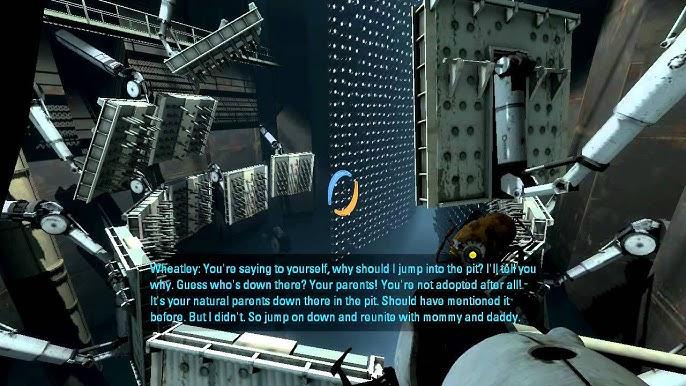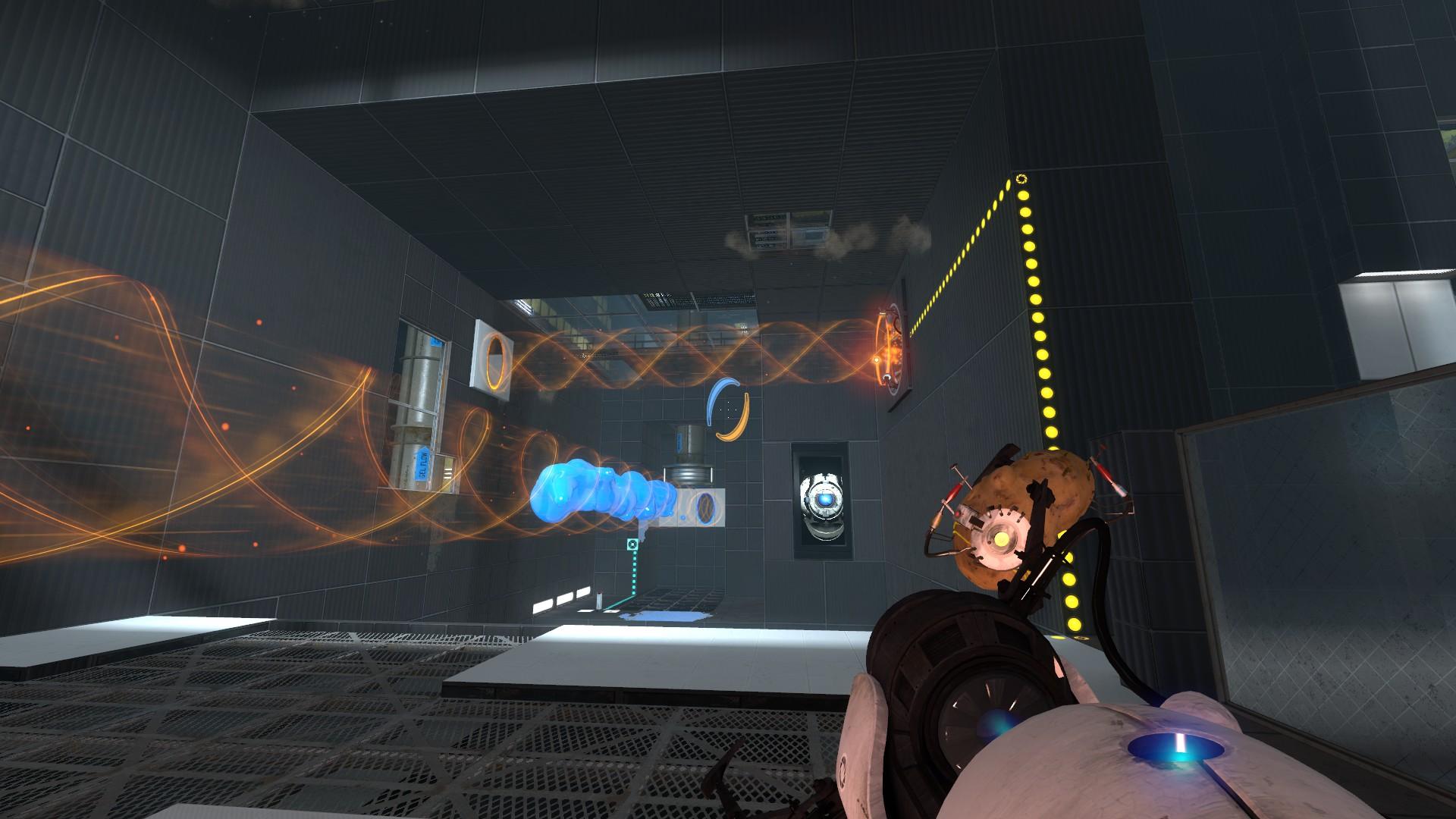“Portal 2” is a puzzle-platform game developed by Valve and released in 2011. The game is available on multiple platforms including Windows, Linux, macOS, and consoles, but I played it on Windows, and it took about seven hours to complete the main story. You can either play the game by yourself or with another person depending on the mode you choose. Due to the difficulty of the puzzles and sinister themes, this game is best suited for a player who’s at least a teenager.
Argument: Portal 2 uses interactive storytelling, establishes well-thought-out learning curves, and empowers community-building in the mechanics of its puzzles to build an exciting experience for players.
Each puzzle in Portal 2 is designed to engage the player in creative ways that make the game interesting. One commonality in many puzzle games is the inclusion of hints and guides, because after all, the player usually needs some help to get started in these types of games. Portal 2 takes a creative approach to this by having the two main NPCs, GLaDOS and Wheatley, tell the player subtle puzzle tips while incorporating elements of both storytelling (such as dropping lore) and humor. This makes the educational process of understanding new mechanics fun while progressing the story forward.

When the NPCs aren’t providing humorous tips, the mechanics of the game are discovered through trial and error or context clues. Portal 2 centers around learning through play. Few things are just handed to you, so players are encouraged to explore their environment and experiment with the different objects they can interact with. You’ll discover pieces of narrative information or trigger audio clips to play that enrich the overall story, keeping you curious.
It’s also important to recognize that puzzles are an “unnecessary obstacle creating the pleasure of low-stakes conflict.” Portal 2 does an excellent job of making the experience pleasurable, rewarding players with humorous dialogue, narrative advancement, or visually striking new areas that motivate players to enjoy the learning process. The game also remains pleasurable because it balances its difficulty by mixing easier puzzles with more challenging ones. This pacing ensures that players do not feel stuck and can enjoy moments of both relaxation and intense problem-solving.
Throughout the game, Portal 2 uses well-designed learning curves that let players enjoy a challenging experience without feeling overwhelmed or frustrated. It begins with basic mechanics, introducing the portal gun and the concept of jumping through portals to navigate. This is the core of the game, which is why it’s introduced at the very beginning. In fact, most core puzzle mechanics are introduced in low-pressure environments toward the beginning of the game.

As players progress, new mechanics are introduced incrementally in controlled environments where you can learn individual skills. Each new element is presented in a level where players can experiment and learn without the added difficulty of complex puzzles. For example, players gradually encounter light bridges in isolated sections before they’re incorporated into larger puzzles. This is a balanced discovery-based experience that allows players to master skills while learning new mechanics, keeping things intellectually stimulating. Each stage feels fresh and familiar at the same time, and the challenge level is perfectly balanced.

Another aspect of Portal 2 that makes it stand out is its community. Specifically, Portal 2 has a large community centered around puzzle building, one that’s still somewhat active despite being 12 years old. Many players like myself don’t just play the single-player story: we play co-op and community-made maps.
First, through co-op, there’s a layer of relationship building that makes Portal 2 unique. I know people have made friends and entire Discord servers through this, showing how people have transcended the boundaries of the game. This is possible because many puzzles in Portal 2 are designed to require two people.
Second, the mechanics of Portal 2’s puzzles make it easy for the playerbase to build their own maps. This is because the puzzles are made up of separate, independent, scaffolded components that can be combined in endless ways. There’s a supplementary tool called “Portal 2 Authoring Tools” where you can build maps using puzzle components that you’d find throughout the main game. Your experience can be whatever you imagine. Additionally, player-created puzzles range in difficulty and style. Some people might enjoy creating incredibly difficult maps that appeal to hardcore fans, while others might design easier, more accessible ones, ensuring there is something for everyone. It also creates a feedback loop that improves the overall experience of the game: developers can gain insights from the community’s creations, learning which mechanics are popular and influencing future updates.


A few players who have negatively reviewed the game state that the narrative isn’t as interesting as they hoped it would be. However, I don’t think Portal 2 attempts to be a heavy narrative-driven game. Instead, it focuses on puzzle-solving experiences in a similar way that games like Sudoku don’t focus on a narrative but instead on a puzzle. I also disagree that the narrative isn’t interesting. It’s embedded throughout the puzzles, incentivizing players to uncover the story by engaging them in active participation (through exploring the map and looking for clues). When the player does come across nuggets of information, it feels satisfying and rewarding because you have to work through a puzzle to find it.
Where I think Portal 2 can be improved is in its immersion. The puzzles leave little room for the player’s imagination outside of problem-solving, and I felt like I could never see the game’s world actually existing. Although this makes the game easy to learn, it takes away from the immersion because each puzzle component (like light bridges) looks the exact same. The puzzles also stand out, whereas in other games the puzzles are seamlessly integrated into the environment.
Despite small flaws, I loved Portal 2 and see why it’s considered a classic puzzle game in the gaming world. Using your portal gun in tandem with all of the mechanics you learn leads to some of the most fun and satisfying puzzle-solving out there. It’s such a euphoric feeling, and I feel incredibly proud of myself for beating it without using an online walkthrough.




